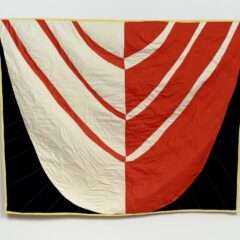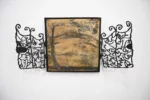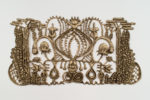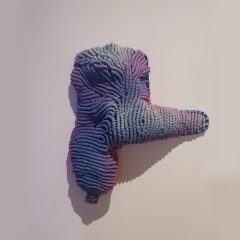At this moment when photos of Egyptian protests remind us all of the documentary power of photographs, along comes a show that reminds us that even reportage photographs can have a sort of truthiness. In the exhibit Off Camera at Fleisher/Ollman, self-invention and inner projections rule in the mostly small works by 17 artists.
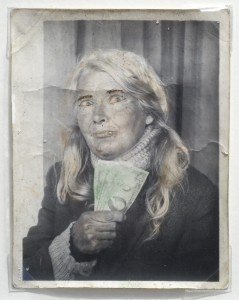
The “facts” the photos record are facts of the imagination, using photographic surfaces that have been cut into, folded, collaged, drawn on, written on, smooshed and otherwise distanced from documentary. Strange focuses and interruptions in clarity also undercut the documented image.
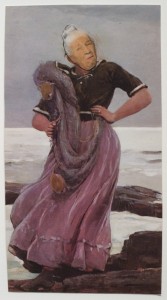
The portrait-related work is passonate. Weird photo-booth self-portraits by Lee Godie and humorous collaged ones by May Wilson (inserting her homely face into conventional images of women) trumpet that some women not only don’t and won’t pose for Vogue, but that they have other kinds of ideas, altogether.

With women for his subjects, Miroslav Tichy’s oddly material unique images are taken surreptitiously with home-made cameras. The work comes from the 1960s to ’80s, but it looks like ’20s and even earlier, with its faded exposures and light leaks and lack of focus. In these odd photos the nostalgia is an illusion, but the push and pull of desire and revulsion is not.
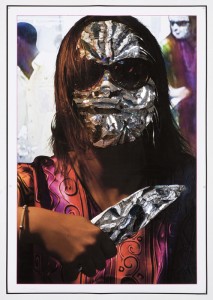
Oliver Herring’s masked portraits, however–based on photos he took at one of his Task art events–speak of anomie, Mardi Gras and online avatars. Herring applied 3-D masks like his subjects wore at the Task event onto the 2-D photos of the masked figures (at least that’s how I understood what I was looking at). Although a Walpurgisnacht terror looms in these large pieces, there remains a Second Life-ish disengaged playfulness, and the camp thrill of cinematic sci-fi and horror flicks–capturing the tone of 21st century life as we live it as everyday escapists.
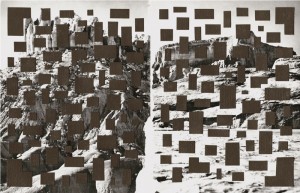
The landscapes in this show are anti-Transcendental, to the point of chilliness. Landscapes are gouged with red divots (Letha Wilson), blotted with rectangles (Brion Nuda Rosch), and printed onto metal sheets that are then folded into sculptures (Virginia Poundstone). Micah Danges’ puddles of printed color subvert illusions of space and depth while suggesting a plague. In this show, landscape photographers are the canaries in the mine, chirping warnings with their dying breaths. But amidst all this gloom and doom, Isaac Tin Wei Lin invades the Great Wall of China with just a stroke of the pen. Even as he seemingly mars the landscape with calligraphic graffiti, he retains the seductive beauty–and goes beyond landscape, to confront cultural issues of power and values.
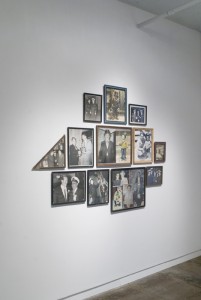
A fragment of Joe Murphy’s collection of portraits–of family and celebrities posing with Joe–are classic barbershop decor, except Joe enhanced the faces, painting or drawing odd eyebrows, red mouths–a child-like intervention all the more poignant for Joe being an adult. While this is outsider-y, with the resulting portraits startling and the size of the collection a marvel, ultimately Joe’s fantasy life is at once familiar and sad, and without the leaps of offbeat imagination I value in outsider art. In contrast, hanging right across from Joe’s portraits are the complex and imaginative collages of folk-artist Felipe Jesus Consalvos.
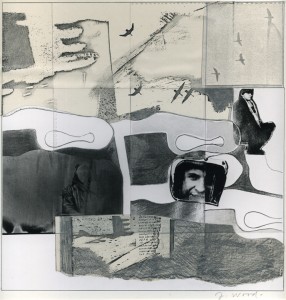
Even much of the contemporary work in this show looks a little retro, partly because of the dominance of black & white. But, with 60 works, there’s a lot to think about, from Anthony Campuzano’s contemporary photographs of his drawings embedded in his drawings–sly syllogisms to ponder–to photographer John Wood’s mixed media experiments that offer a journey to the mind and the eye.


